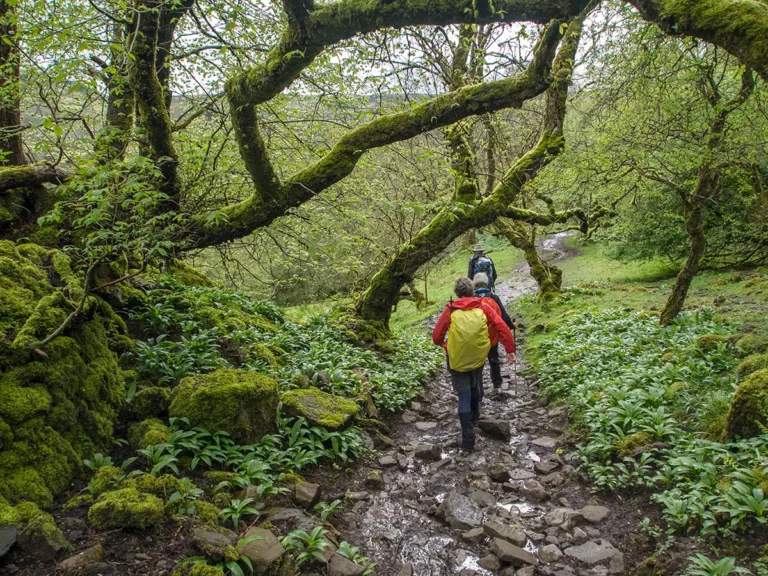Great hiking boots are the best investment a hiker can make. Short of an accident, nothing can make a hike go poorly as quickly as a bad pair of boots. If shopping for a new pair of hiking boots — or your first pair — you need some good hiking boots advice to point you in the right direction.
Good boots give you the support, comfort, and traction you need to conquer any hike. A long hike puts enormous stress on your feet and ankles. That stress is transmitted upward to the legs and has an effect on your back and entire body.
You likely have a few old pairs of cross trainers or Converse in your closet and question why you need to buy hiking boots. Too often, the answer to that question comes at the wrong time.
Hiking boots advice.
When boots are mentioned, the thought of classic cowboy boots or clunky work boots often comes to mind. Hiking boots are typically lower rise, much lighter, and made of flexible material.
A great hiking boot provides the added stiffness and ‘springiness’ required by your foot and ankle with the flexibility to climb hills and step across large boulders.
Hiking boots give you the confidence to press off the ground, boulders, and other surfaces confidently. Without sure-footing, the risk of sore calves, feet, and sprains increase.
Though specialized materials are used in all modern boots, leather is still a big component of better boots. It’s tough, water-resistant (when treated) and has good stiffness, moisture and thermal properties.

Should I pick a comfortable boot?
The word ‘comfort’ has the ring of luxury about it. But, in hiking, comfort isn’t a luxury, it’s essential. You need to continue walking without producing blisters or chafing. You need to be able to spend long hours in them without moisture build-up or excessive heat or cold.
Get hiking boots that feel right for your foot. Size is only the starting point. You need to spend the time and money to get something that feels good the minute you put them on. Though boots, like shoes, will wear in, if they don’t feel right immediately they rarely will later.
Keep in mind that good hiking boots are not shoes. You should expect them to feel stiff and give little on the outer sole and around the ankle. That’s part of how they do what they are designed to do.
Understand the terrain and the grip you need
You’ll be scrambling over wet rocks, slippery gravel, flaking hills and muddy trails. While no boot can eliminate all problems, boots do differ in their ability to help. Some are little better than tennis shoes. Others approach nail-studded ice boots.
Well-designed hiking boots will have a variety of materials and shapes that minimize slippage on wet rocks and maximize sticking power on flaking hill grades. Vibram lugs with some tread are a minimum. They look almost like car tires but are a more plastic, less rubbery material.
You want to get a gusseted tongue to help keep gravel and dirt out of the boot. Also, look for materials (treated leather, rubber, special composites) that are water-resistant. Wet boots lead to foot problems. Gore-Tex is a common ingredient these days because of its excellent thermal properties. Look for it.
Other factors depend on what kind of hiking you plan to do.
When serious, you’ll almost certainly have more than one pair for different terrains. Hunting and hiking boots have similarities, but hunting boots are typically over-constructed for easy hikes.
That’s ok. Good hiking boots will last for years.
How much should great hiking boots cost?
Before discussing price, new hikers don’t need to run out and purchase a pair of boots. Many of us at Hiking Beginner wear trail runners on hikes. But there is a time and place for hiking boots so don’t overexert yourself too early.
A good pair of hiking boots will cost between $150-$200, with more expensive waterproof boots costing more.
If you hike over rough terrain you’ll probably want something relatively high laced. You want to get support above your ankle. How much higher depends on your style, but make sure you get plenty of support.
Final thoughts.
Always test your boots using the type of hiking sock you will use. Thick, moisture-wicking, cotton or blend are perfect. You can’t tell what the results will be if you try them on with casual or even sports socks.








